Mastering the Art of Carpet Weaving: Rug Techniques
Diverse Techniques in Rug Making
The art of rug making is a fascinating blend of tradition, culture, and creativity, with various techniques contributing to this rich tapestry. Key among these techniques are crocheting and rug weaving, each with its own unique history and method.
Crocheting, a method with an impressive 3,000 monthly searches, showcases its widespread popularity. It involves using a crochet hook to interlock loops of yarn, thread, or strands of other materials. The technique's versatility allows for a wide range of designs, from simple, functional patterns to complex artistic creations. Crochet rug techniques, in particular, have evolved to incorporate various styles, including contemporary and traditional motifs, making them a popular choice for modern home decor.
Rug weaving, including the esteemed Oriental rug weaving, is a hallmark of traditional craftsmanship. This method involves interlacing two distinct sets of yarns or threads at right angles to form a fabric or cloth. Oriental rug weaving, sought after for its intricate designs and high-quality materials, often features elaborate patterns that are deeply rooted in the cultural history of regions like Persia, Turkey, and China.
Both crocheting and rug weaving require a high level of skill and patience, with the final product often reflecting the weaver's dedication and attention to detail. These methods not only produce functional items but also works of art that are valued for their aesthetic and cultural significance.
The Intricacies of Hand-Knotted Rugs
Hand-knotted rug making is a meticulous and labor-intensive process, revered as one of the most prestigious methods in rug making. This technique, integral to the creation of Oriental rugs, involves an artisan tying each knot individually by hand on a specialized loom. The quality, durability, and value of a hand-knotted rug are often determined by the knot density, typically measured in knots per square inch. A higher knot density usually correlates with greater detail, complexity, and durability of the rug.
The origins of hand-knotted rugs trace back to ancient Persia, now modern-day Iran, where they were initially crafted as practical items for nomadic tribes. Over time, these rugs evolved into symbols of artistic expression and luxury. Traditional designs often feature intricate patterns, including floral motifs, geometric shapes, and pictorial scenes, each carrying its own symbolism and storytelling elements.
Understanding the technique of a hand-knotted rug is key to appreciating its artistic and cultural value. The creation of a single rug can take anywhere from a few months to several years, depending on the complexity of the design and the size of the rug. The painstaking process and the skill involved in hand-knotting make these rugs highly sought after and valuable, often regarded as heirlooms and works of art.
The Persian Knot
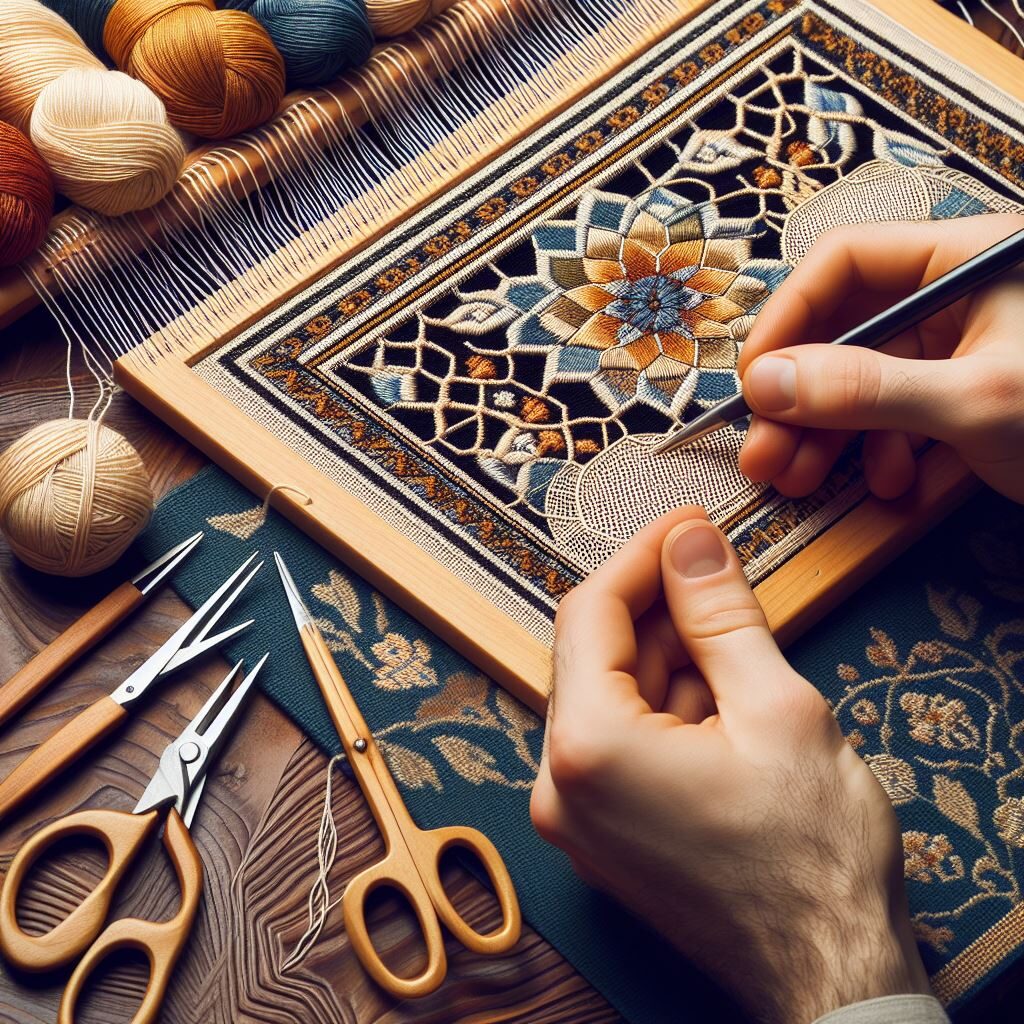
Explore the intricate world of the Persian knot, a hallmark of traditional rug weaving craftsmanship.
Joe Rugs - Carpet Expert
Hello! I'm Joseph Rugs, the founder of CarpetJoe.com and your guide through the intricate world of carpets. Born and raised in London with a deep-rooted passion for art and culture, I've explored the globe to bring the rich tapestry of carpet weaving right to your screen. My academic background in arts and humanities from Oxford has fuelled my curiosity, leading me to uncover the stories behind every knot and weave. As a family man, my adventures are shared with my loved ones, enriching our lives with every piece of art we encounter. Join me as we explore the beauty and craftsmanship of carpets together.
Rug Hooking and Crochet Rug Techniques
Rug hooking and crochet rug techniques are two distinct yet equally fascinating methods in the world of carpet weaving. Both of these techniques have evolved over time, reflecting the changes in cultural and artistic trends.
Rug hooking is a craft that traditionally involves pulling loops of yarn or fabric through a woven base such as burlap, linen, or rug warp. This technique allows for a significant degree of creativity, enabling crafters to create detailed and vibrant patterns. The method is highly customizable, allowing for a wide range of textures and designs. Rug hooking is not just a form of artistic expression; it also serves as a practical way to create durable and functional rugs that can withstand everyday wear and tear.
Crochet rug techniques, on the other hand, offer a unique blend of traditional crocheting with the durability required for floor rugs. Using thicker yarns or even recycled materials like fabric strips, crochet rugs can range from simple, minimalist designs to intricate, multicoloured patterns. These rugs are not only aesthetically pleasing but also eco-friendly, offering a sustainable option for rug making. The flexibility of crochet allows for experimentation with various shapes, sizes, and textures, making each rug a unique piece of art.
Both rug hooking and crochet rug techniques hold a special place in the carpet weaving world. They allow individuals to express their creativity while creating functional and beautiful pieces for the home. These techniques have garnered a dedicated following among crafters and artists, contributing significantly to the diversity and richness of carpet weaving traditions.
Types and Evaluation of Rugs
Understanding the different types of rugs and their evaluation criteria is essential for both enthusiasts and professionals in the field of carpet weaving. Rugs can be categorized based on their construction methods, materials, and intended use, each type offering unique characteristics and benefits.
The three primary types of rugs are handmade, machine-made, and hybrid.
- Handmade rugs, including hand-knotted, hand-tufted, and hooked rugs, are often considered the most valuable. Their uniqueness lies in the individual craftsmanship and the time invested in each piece, resulting in rugs with character and historical value.
- Machine-made rugs, while less unique, offer affordability, consistency, and availability in a wide range of designs.
- Hybrid rugs combine elements of both handmade and machine-made techniques, offering a balance between uniqueness and affordability.
Evaluating a rug involves several factors, including its material, construction quality, design, and condition. For handmade rugs, particularly antique pieces, their historical significance, provenance, and the story behind their creation also contribute to their value. When assessing a rug, it's important to examine its weave density, the clarity of its design, and the quality of its materials.
Properly rolling a rug is crucial for its preservation. The ideal method is to roll the rug with the pile facing inward, starting from the bottom end and rolling towards the top. This method protects the pile and the rug's structure, especially during transportation or storage. For long-term storage, it's important to protect the rug from environmental factors such as moisture, pests, and direct sunlight to maintain its condition and appearance.
In summary, understanding the different types of rugs and their evaluation criteria is key to appreciating and preserving these beautiful and functional pieces of art. Whether for personal enjoyment or professional interest, knowledge of these aspects enhances one's appreciation of the rich and diverse world of carpet weaving.
Common Types or Rugs
Each type of Oriental rug has its unique charm and story, making them more than just a luxury item; they are a piece of their country's cultural legacy. Collectors and enthusiasts of Oriental and Persian rugs appreciate them not only for their aesthetic appeal but also for their cultural, historical, and artistic significance.
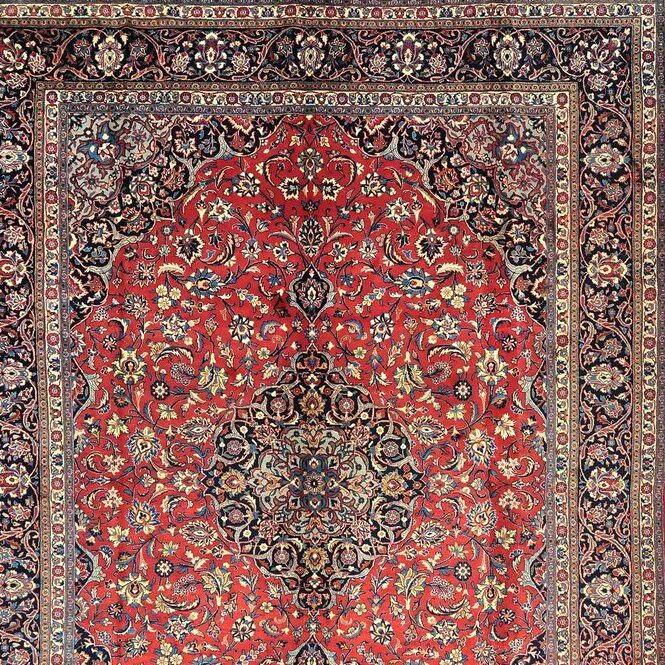
Persian Rugs
Originating from what is now modern-day Iran, Persian rugs are celebrated for their unparalleled craftsmanship and enduring beauty.
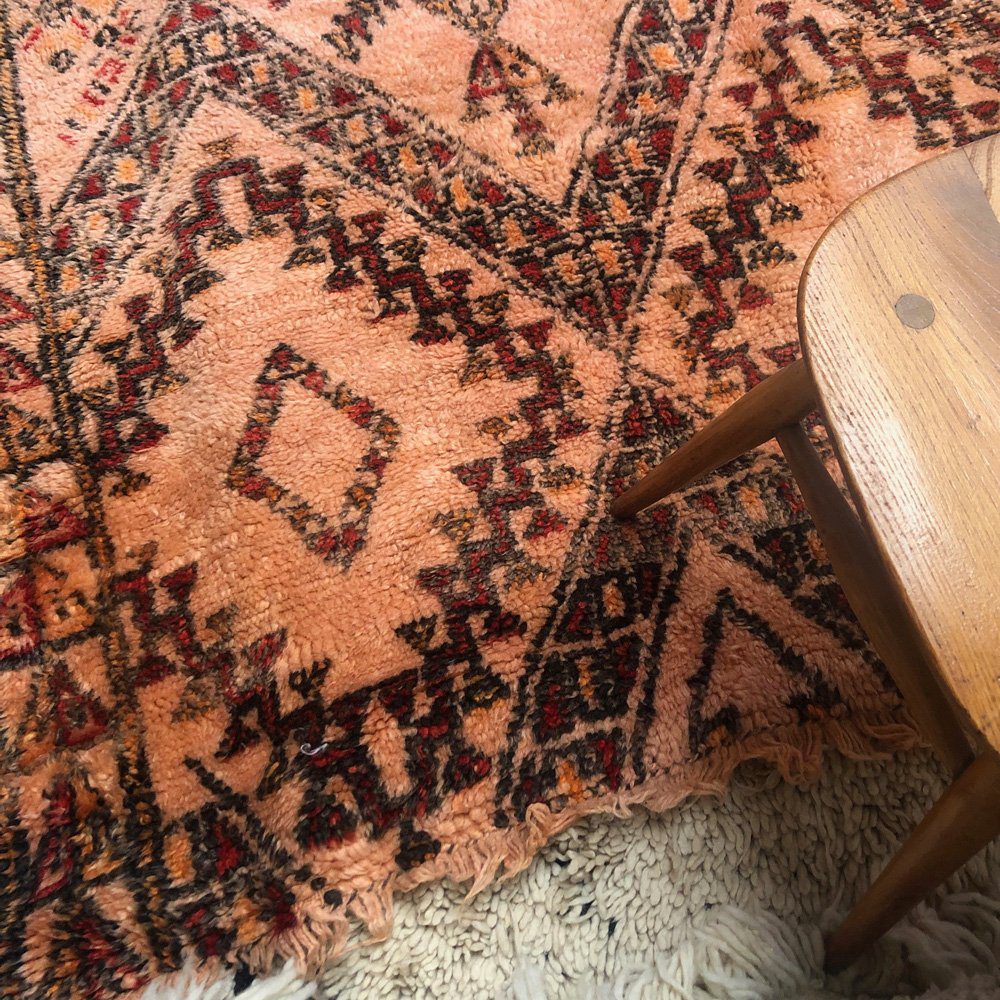
Berber Rugs
Originating from the Berber tribes of North Africa, particularly Morocco, this type of carpet is renowned for its rugged texture and resilient nature.
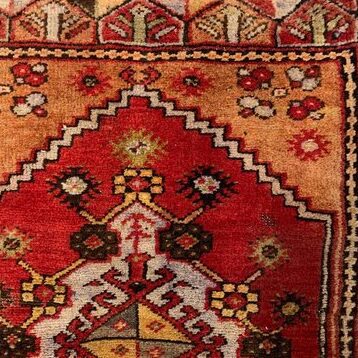
Turkish Rugs
Turkish rugs have a legacy steeped in history and artistry, and have always been a symbol of exquisite craftsmanship and cultural significance.
Carpet Care & Maintenance
Rug Cleaning Mastery and Solutions to Common Damages
Understanding the proper techniques for rug cleaning is essential for maintaining their beauty and longevity. Regular vacuuming is a key step in preventing dust and dirt accumulation. However, deeper cleaning methods, such as steam cleaning or dry cleaning, are necessary for removing stubborn stains and embedded dirt.
Steam cleaning, or hot water extraction, is particularly effective for thorough cleaning and sanitizing.
For delicate rugs, dry cleaning with special powders or solvents is advisable.
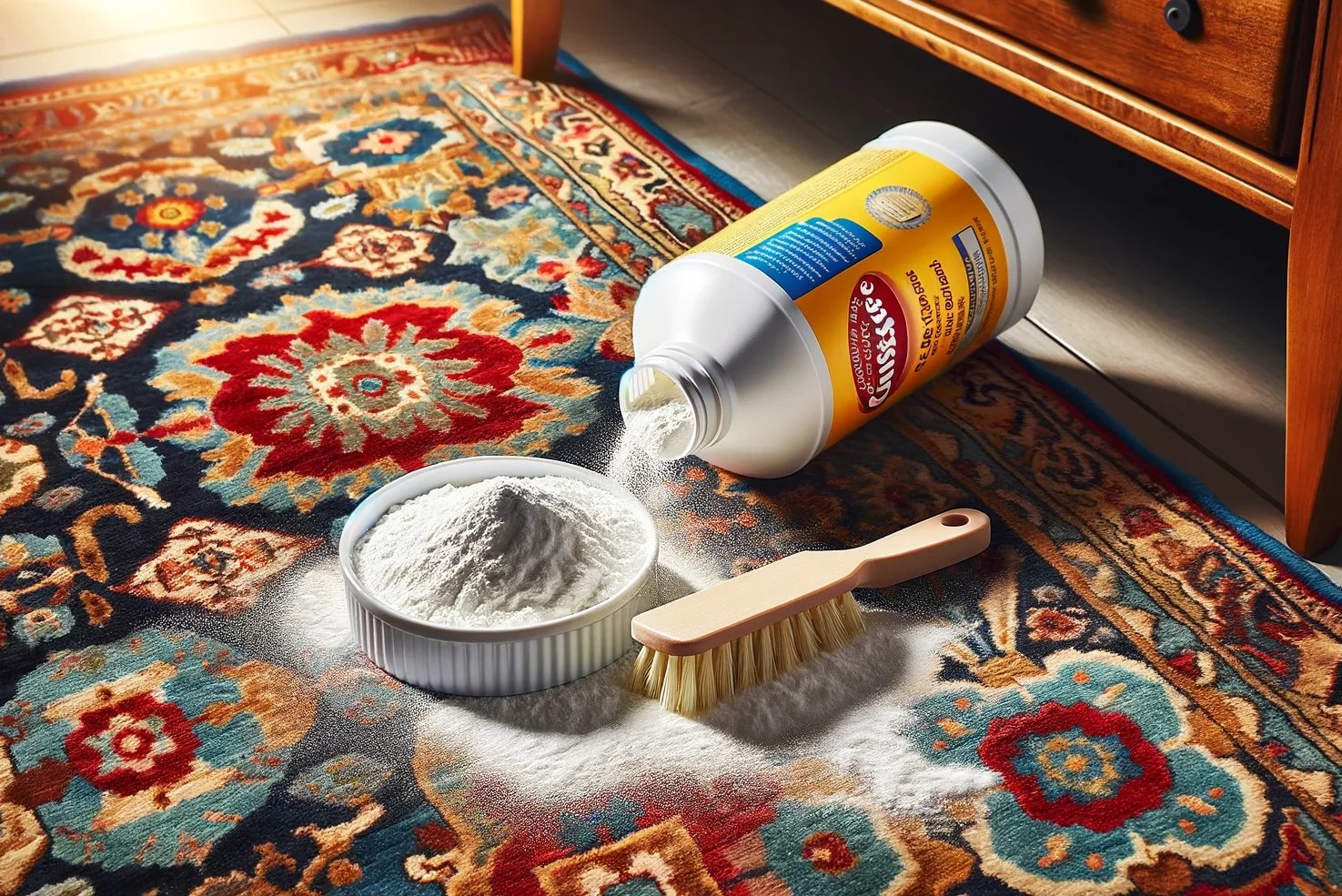
Homemade Flea Treatments for Carpets
Homemade flea treatments for carpets offer a natural and cost-effective alternative to commercial products. Read More →
Frequently Asked Questions
There are several techniques for making rugs, including hand-knotting, hand-tufting, hooking, weaving, and braiding. Each method offers different textures and styles, from the intricate patterns of hand-knotted rugs to the unique designs of hooked rugs.
The proper way to roll a rug is to start at one end and roll it tightly towards the other end, with the pile or design facing inwards. This protects the pile from damage and maintains the rug's shape. For storage, it's recommended to wrap the rug in a breathable fabric to protect it from dust and moisture.
The technique of a hand-knotted rug involves creating knots by hand on a specialized loom. Artisans tie individual knots to the warp threads, creating intricate patterns and designs. This time-consuming process results in a highly durable and detailed rug, often considered a form of art.
To assess a rug, examine its material, craftsmanship, knot density (in hand-knotted rugs), design clarity, and condition. For antique rugs, factors such as historical significance, rarity, and provenance also play a crucial role in assessment.
The three primary types of rugs are handmade (such as hand-knotted and hand-tufted), machine-made, and hybrid (combining elements of handmade and machine-made techniques).
Each type varies in terms of craftsmanship, durability, and aesthetic appeal.



